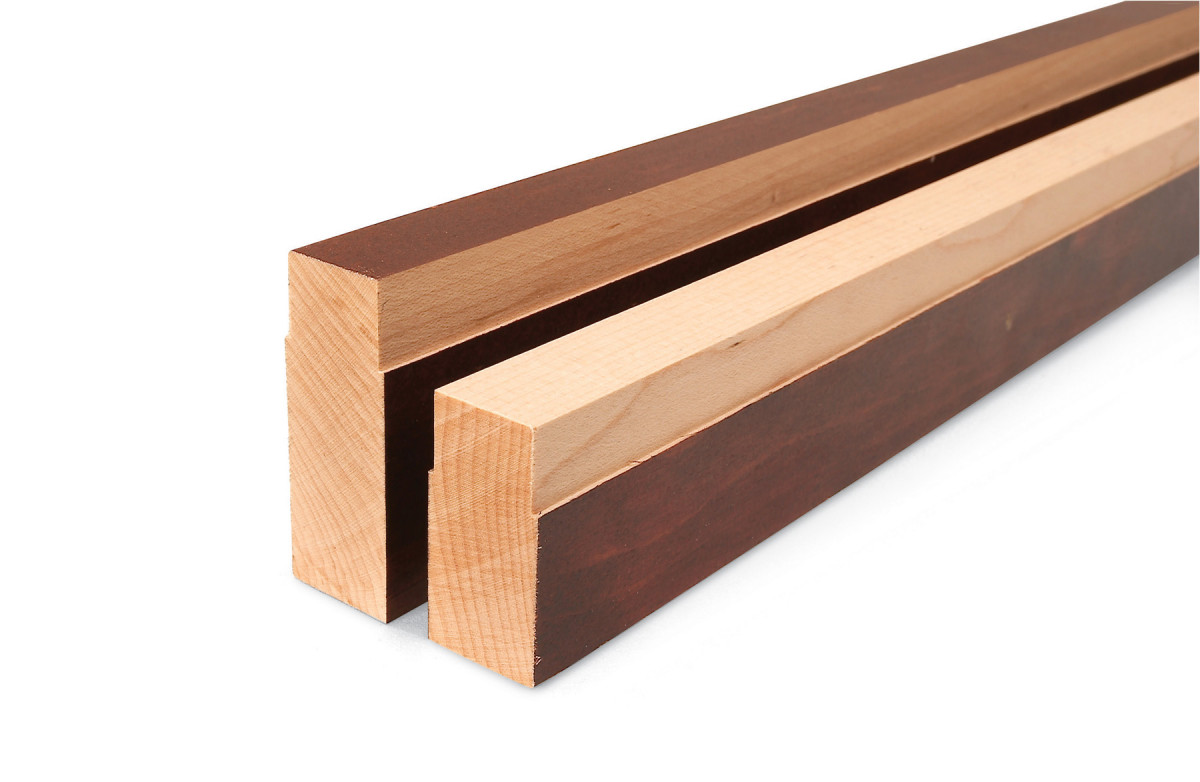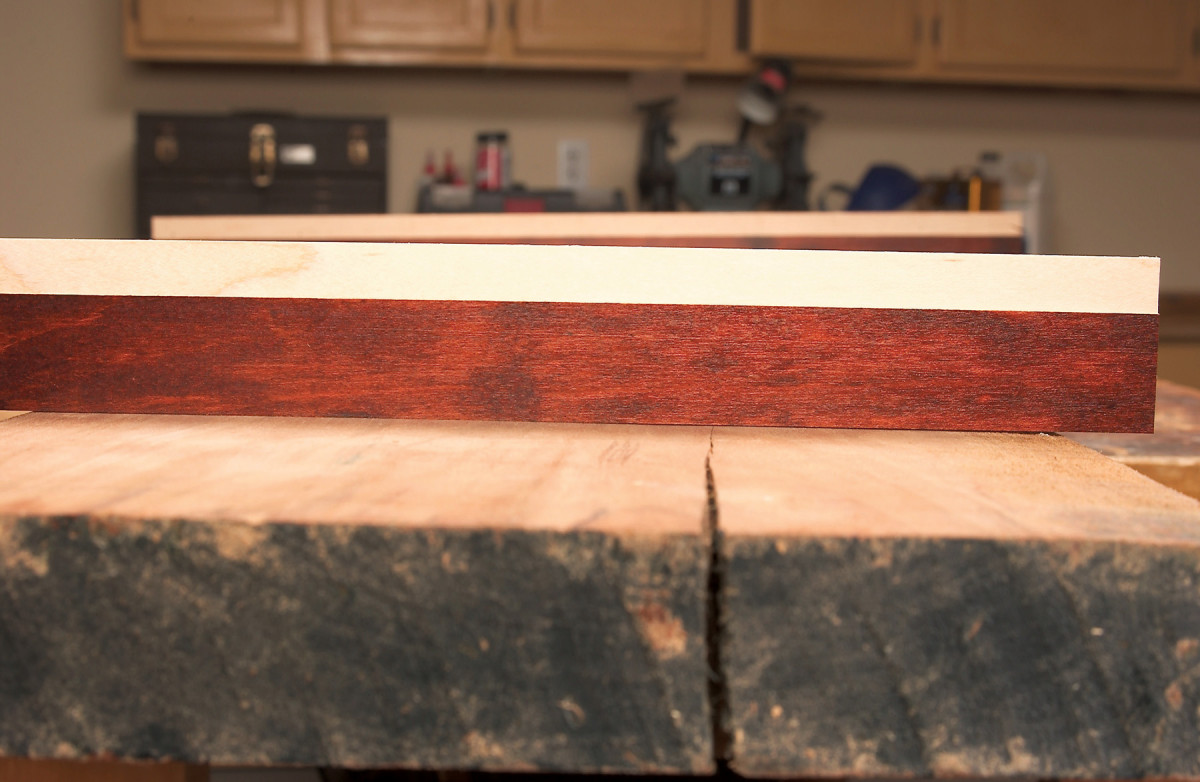We may receive a commission when you use our affiliate links. However, this does not impact our recommendations.

Winding sticks are very useful for gauging twist in a board, but they’re difficult to read. My improved version of these time-tested helpers makes the twist stand out.
I start with a pair of straight, flat 2“-wide sticks made from 3/4“-thick light-colored wood. Then I stain both of them dark—the darker, the better. When the stain is dry, I cut shallow rabbets in both faces at the top of both sticks. This exposes a ribbon of light-colored wood above the stained surface on each face. To cut the rabbets, set the blade’s height to 1/2“ and the rip fence 1/32“ narrower than the stick. Rip all four rabbets from this setting.
Joint the top edge of one board to remove the stain. Then rip this board narrower by the width of the rabbet on the other board. That’s all there is to it.
During use, the narrow stick goes in front. Any twist in the board shows as a dark-colored wedge between the top of the rabbet on the near stick and the bottom of the rabbet on the far stick.—Stephen Youngerman

The taller winding stick in the back shows the direction of the twist in the board.
Here are some supplies and tools we find essential in our everyday work around the shop. We may receive a commission from sales referred by our links; however, we have carefully selected these products for their usefulness and quality.









A simpler solution is to buy a 48 inch length of aluminum angle at the big box store. Get the widest legs they have and thick enough not to bend easily. Cut it in half and put some contrasting tape over one edge. I never needed to vary the height of the pieces. I just adjusted my sight line until the front and back “sticks” looked close to each other.